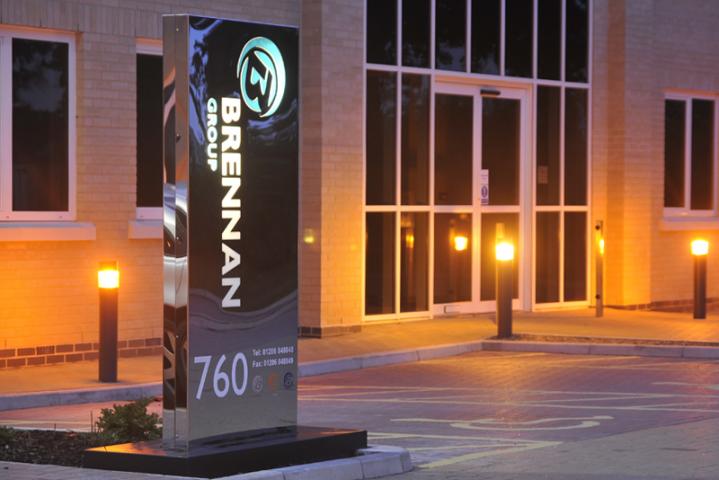Business
Remote Work VS. Digital Nomadism

Remote work may be tempting to an ever-increasing number of people, but not everyone understands the difference between freelancers and digital nomads.
What type of work model should you choose if you want to shift to remote work?
Let’s take a look at the basics.
Digital Nomads
Digital nomads work while traveling. Many of them choose to establish a stable client and found a business in one country before they even start traveling. Traveling is expensive, after all, and there are also local taxes to consider, in addition to the state taxes.
However, it is important to note that digital nomads do not necessarily rely on gigs for a living. In fact, many of these people are entrepreneurs or are looking for long-term contracts with established businesses.
The chief difference between a freelancer and a digital nomad is that the first doesn’t necessarily make a different country their base.
Freelancers
Freelancers are remote workers who like to retain the freedom to live a lifestyle where they can bring their work with them. Unlike digital nomads, these people usually rely on outsourcing or casual gigs, and are more likely to work from their favorite café or park than a different country.
Many freelancers looking for gig work pick projects on specialized platforms. Usually, they aim to establish a steady client base and sometimes even run their own business.
What Does Hiring Digital Nomads and Freelancers Mean for a Business?
First of all, these people are tech-savvy. Unlike employees scared of giving up office work, digital nomads and freelancers are used to virtual communication and are always on top of new tech developments.
The biggest challenge is incorporating them with traditional workers, which is to say that you must train team managers to learn to do things differently.
So, rather than asking yourself what remote workers can offer you, ask yourself what you can offer them.
Here are some ideas.
1. Flexibility
Both digital nomadism and freelancing offer independence but remote workers may have set hours, and may not be able to travel as readily as digital nomads. Some companies are even offering in-house gigs to remote workers, which are operated through the actual company.
Flexible work schedules will be appreciated by both categories, so plan your projects ahead so that you can accommodate different time zones.
2. Taxes
One of the biggest differences is how taxes must be filed when you’re working abroad. Some remote workers may have their taxes taken out, as they’re actual employees, while others may file a 1099 and are responsible for paying their own taxes.
Some digital nomads consider renouncing U.S. citizenship to stay on top of unnecessary costs, but this is not a rule of the thumb.
However, it is highly likely that digital nomads will have considered how to prevent double taxation, which usually means picking one of the following options:
- The Foreign Tax Credit (FTC)
- The Foreign Earned Income Exclusion (FEIE)
- Tax Treaties
3. Roles
Many remote workers and digital nomads go after the same kind of roles. The keyword here is flexibility but also consider the fact that some roles simply cannot be performed remotely. Think in terms of frontline work, for example.
However, you can safely conclude that if a role can be performed remotely, remote workers won’t even consider office work for a second. That’s why these people look for good remote startups to work for, as startups are synonymous with new tech.
Some of the typical roles freelancers and digital nomads perform include (but are not limited to):
- Blogging and Vlogging
- Online Tutoring Services
- Writing and Copywriting
- Designing
- SEO and Social Media Services
4. Continued Learning
Both have great opportunities for continuing their education. It can be done part-time as you go, or digital nomads may take entire courses between gigs. For remote workers, some companies may provide eLearning options, while with others, it may be the responsibility of the workers. These courses can range from obtaining degrees to simply brushing up on some soft skills, depending on what a business looks for in their employees.
5. Offer Appropriate Contract Types
As mentioned above, some remote workers and digital nomads run their own businesses, others rely on gigs, and some look for a steady client base regardless of the type of work.
However, what all these people have in common is their expectations of the contractor.
Simply put, a contract you offer must include the following information:
- Project scope
- Deliverables
- Pricing and rates
- Payment schedule
- Project timeline
- Project deadlines
- Legal terms
- Cancellation terms
- Contact details of both parties
- Ownership and/or copyright
- Signature of both parties
Think in terms of projects and how to best define the responsibilities of both parties to avoid misunderstanding.
Key Takeaways
Remote workers and digital nomads are a great addition to any team, but there are definitely some things you simply have to offer them if you want them to remain loyal to your business.
Continues learning will always be appreciated, and the same goes for a flexible schedule and appropriate contract.
Whenever in doubt, ask them what they are looking for. Neither remote workers nor digital nomads are shy when voi8cing their expectations!
Business
The EU Digital Identity Wallet: A Comprehensive Overview


The European Union is spearheading a transformative initiative with the introduction of the EU Digital Identity Wallet. This ambitious project aims to provide EU citizens and residents with a universal digital identity system, enhancing convenience, security, and efficiency in accessing both public and private services. In this article, we explore the key aspects of the EU Digital Identity Wallet, its benefits, challenges, and implications for the future of digital identity in Europe.
1. What is the EU Digital Identity Wallet?
The EU Digital Identity Wallet is a secure and interoperable digital identity system designed to facilitate seamless authentication and verification processes across the European Union. It allows individuals to store and share personal information and credentials digitally, including identity documents, licenses, certificates, and more. The wallet can be accessed through a mobile application, providing a user-friendly interface for managing and presenting digital identity information.
2. Objectives of the EU Digital Identity Wallet
The primary goals of the EU Digital Identity Wallet are:
- Empowering Citizens: To provide individuals with control over their personal data and digital identity.
- Simplifying Access: To streamline access to online services by providing a single, trusted source of identity verification.
- Enhancing Security: To offer a secure and reliable method for digital authentication and reduce fraud and identity theft.
- Promoting Interoperability: To ensure compatibility across EU member states, fostering cross-border digital interactions.
3. Key Features of the Digital Identity Wallet
- Interoperability: Designed to work seamlessly across all EU member states, enabling citizens to use their digital identity in different countries without barriers.
- Data Privacy: Users retain full control over their personal data, deciding what information to share and with whom.
- Multi-Functionality: Beyond simple identification, the wallet supports a range of functionalities, including age verification, electronic signatures, and secure document storage.
- High Security: Incorporates advanced security measures, including encryption and biometric authentication, to protect user data.
4. How the Digital Identity Wallet Works
Registration and Verification: To use the wallet, individuals must first register and verify their identity through a secure process, often involving biometric data and official documentation.
Data Storage: Once verified, users can store various credentials in their digital wallet. These can include identity cards, driver’s licenses, academic diplomas, and other official documents.
Usage: When accessing a service requiring identity verification, users can present their digital wallet. The wallet generates a secure, verifiable digital credential that can be shared with service providers.
Updates and Management: Users can update their stored credentials as needed, ensuring that their information remains current and accurate.
5. Potential Benefits
For Citizens:
- Convenience: Eliminates the need for multiple physical documents and simplifies the process of proving identity online.
- Control: Empowers individuals to manage their own data, enhancing transparency and trust.
For Businesses:
- Efficiency: Reduces the burden of identity verification processes, lowering operational costs.
- Trust: Provides a trusted method for verifying customer identities, enhancing security and compliance.
For Governments:
- Streamlined Services: Facilitates more efficient delivery of public services and reduces administrative overhead.
- Cross-Border Integration: Supports the EU’s vision of a digital single market by enabling cross-border interactions and services.
6. Implementation Challenges
Despite its promising features, the EU Digital Identity Wallet faces several challenges:
- Data Privacy Concerns: Ensuring that user data is adequately protected and that privacy rights are upheld is a critical issue.
- Interoperability: Achieving seamless interoperability across diverse national systems and regulations requires significant coordination and technical standardization.
- Public Adoption: Encouraging widespread adoption among citizens and businesses necessitates addressing concerns about security, usability, and trust.
7. Timeline and Rollout
The EU Digital Identity Wallet is part of the broader European Digital Identity framework. The initiative is progressing through several phases:
- Development: Pilot projects and technological development are underway to refine the system and address potential issues.
- Testing: Extensive testing is being conducted to ensure reliability, security, and user-friendliness.
- Deployment: The wallet is expected to be available for widespread use by 2025, with ongoing updates and improvements based on user feedback and technological advancements.
8. Legal and Regulatory Framework
The EU Digital Identity Wallet operates within a robust legal and regulatory framework designed to ensure security and compliance:
- eIDAS Regulation: The Electronic Identification, Authentication and Trust Services (eIDAS) regulation provides the legal basis for electronic identification and trust services in the EU.
- GDPR Compliance: The General Data Protection Regulation (GDPR) ensures that user data is handled in accordance with strict privacy and data protection standards.
- National Legislation: Each member state must align its national legislation with EU regulations to support the implementation of the digital identity wallet.
9. Future Implications
The EU Digital Identity Wallet has the potential to revolutionize the way individuals interact with both public and private sectors across Europe:
- Digital Transformation: Accelerates the digital transformation of public services and private sector operations.
- Innovation: Creates opportunities for new digital services and applications that leverage secure and verifiable digital identities.
- Economic Growth: Facilitates smoother cross-border trade and interactions, contributing to economic growth and the realization of the digital single market.
10. Conclusion
The EU Digital Identity Wallet represents a significant step towards a more integrated and efficient digital Europe. By providing a secure, user-friendly, and interoperable digital identity solution, it aims to enhance the lives of EU citizens, streamline business operations, and support the digital transformation of public services. As the project moves forward, addressing the challenges of privacy, interoperability, and public adoption will be crucial to its success. The EU Digital Identity Wallet holds the promise of a future where digital interactions are more secure, convenient, and accessible for all.
Business
Popularity of Monolith Signage for Businesses


When it comes to stylish and functional on-street advertising, monolith signs are quickly becoming the clear winner.
Why do so many businesses, from restaurants to fitness centers, choose monolith signs to make their brand stand out and improve the look of their building?
We try to explain.
Distinctive Design and Practical Benefits
One way to get your name and contact information out there is with a monolith sign, which is basically just a freestanding structure.
The design is vertical and striking. It’s a powerful visual for people passing by to increase brand awareness and draw in some customers.
Visibility from a Distance
Visibility is a defining characteristic of monolith signs. They are made to be used on both sides, so the branding is identical on both sides.
This makes them especially useful in areas with a lot of foot traffic, where being seen from all sides is important for getting your message across.
Aesthetic Appeal
People love the clean, powerful look of monolith signs. As long as they fit in with the neighborhood’s visual standards, they look good and show that a business cares about quality and design.
These signs can be lit up, which makes them bright and noticeable, which is important for getting potential customers’ attention from far away.
Flexible Placement
In contrast to traditional signs that may only fit in certain areas of a building’s front, monolith signs can be put anywhere on your property.
For businesses that are not right next to footpaths or high-traffic routes, this is extremely valuable because these signs can be placed in a way that draws attention from busy roads and paths.
Durability and Security
Since they are made of strong materials, monolith signs are sturdy enough to resist vandalism and normal wear and tear.
This makes them a good choice for any business setting. The fact that they are strong means that they will always be a part of your business and help your marketing.
Customization and Professional Installation
If you choose a monolith sign, you are choosing a custom way to advertise. Ice Signs work closely with you from the first design stage all the way through the installation.
We start with a couple of primary designs and finishes and then add your company’s colors, fonts, logos, and pictures to make a sign that is truly unique and represents your business.
Comprehensive Service
Our team is dedicated to giving you a complete experience and making sure that every monolith sign meets your business’s exact needs.
Our experts will hook you up with the right style of placement and installation of the sign, handling all aspects carefully. We stick to health and safety standards for a smooth setup.
Why Invest in Monolith Signage?
The way businesses think about and use outdoor advertising has changed a lot since monolith signage came out. Because it is highly visible, has an eye-catching design, and is built to last, it is a great tool for businesses that want to make a strong impression in a crowded market.
Companies that are thinking about this dynamic advertising option can get a free site survey to figure out what their needs are and how to best meet them.
Talk to our experts about how monolith signs can change the way people see your business and bring in more customers.
Parting Thoughts
You can use monolith signs for reasons other than advertising. They are also a good investment for your business because they will last, be flexible, and fit with your brand.
These signs can be traditional or illuminated. Either way, they make your business stand out in a packed market.
Ice Signs is a company in Leeds that makes custom, hand-made signs, such as metal and illuminated signs. With over 20 years of experience, they deliver tailored design, supply, and installation services for both indoor and outdoor business signage needs.
For more information, visit:
https://www.icesigns.co.uk/products/monolith-signs/
https://www.icesigns.co.uk/products/totem-signs/
Business
Chris Dixon, RFC: Shaping the Future of Retirement Planning


Chris Dixon stands out as a beacon of innovation and expertise in financial advisory. As a co-founder and managing partner at Oxford Advisory Group, Chris Dixon brings a wealth of knowledge and a unique perspective to retirement planning and tax-efficient strategies for retirees. His robust background, which combines a Bachelor of Science with Political Science Honors and a certificate in Sustainable Business Strategy from Harvard Business School, makes his qualifications impeccable.
A Commitment to Tax Efficiency and Education
Chris Dixon’s role at Oxford Advisory Group transcends traditional financial planning. His focus on developing tax-efficient strategies and income planning for retirees places him at the forefront of financial consultancy. Chris Dixon’s approach is not just about ensuring financial security for the present but paving a way for his clients’ sustainable and prosperous future.
Personalized Strategies for Every Client
Chris Dixon’s expertise goes beyond just offering financial advice; he excels in crafting personalized financial strategies that cater to each client’s unique needs. Understanding that no two financial situations are alike, Chris Dixon RFC employs a meticulous approach to financial planning, ensuring that every plan is tailored specifically to the individual’s goals, lifestyle, and future aspirations. This personalized touch sets Chris Dixon apart in the industry and guarantees that clients receive the most relevant and impactful financial guidance possible.
Bridging Knowledge Gaps with Seminars and Media Appearances
Recognizing the importance of financial education, Chris Dixon actively participates in informational seminars on Taxes in Retirement and Social Security. His commitment to sharing knowledge extends beyond personal interactions. Chris Dixon is a co-host of “Reinventing Retirement” on TV and radio, platforms that significantly broaden the reach of his valuable insights.
Authorship and Influence
Chris Dixon’s contributions to the financial industry include co-authoring the book “Total Tax-Free Retirement.” His articles and expert opinions have been featured in prestigious publications such as Newsmax Finance, Yahoo! News, Nasdaq, and US News, marking him as a thought leader in retirement planning.
Leadership and Vision
Beyond his immediate responsibilities, Chris Dixon’s influence extends to mentoring other advisors nationwide and sharing his tax strategies and planning techniques. His involvement with top Wall Street banks and his role on the board of the Advent Health Foundation illustrates his commitment to both the financial and broader community.
Entrust Your Future with Christ Dixon
Choosing Chris Dixon as your Registered Financial Consultant (RFC) means entrusting your retirement planning to a visionary deeply committed to your financial well-being and future. With Chris Dixon and the Oxford Advisory Group, retirement planning becomes not just a necessity but an empowering journey toward achieving your dreams.
In an ever-evolving financial landscape, Chris Dixon, RFC, represents a trusted guide committed to helping retirees navigate the complexities of financial planning with confidence and foresight. His dedication to tax efficiency, coupled with a proactive approach to education and community engagement, sets a new standard in financial advisory services.
Contact Oxford Advisory Group Today
For those looking to secure their financial future with a partner who truly cares, Chris Dixon, RFC, at Oxford Advisory Group is an unparalleled choice. His expertise and innovative strategies ensure that retirement is not just a phase of life but a new beginning full of possibilities and peace of mind.
-



 Biography5 years ago
Biography5 years agoJacqulyn Elizabeth Hanley is the Mother of Liza Soberano?
-



 Home4 years ago
Home4 years agoEpson L3110 Driver Free Download Latest Updated Version
-



 Games3 years ago
Games3 years agoBest Free To Play MMORPG To Try This 2021
-



 Biography5 years ago
Biography5 years agoAmanda Levy Mckeehan Biography, Family, Net Worth, Age, Affairs, Facts
-



 Biography5 years ago
Biography5 years agoWho is Rose Dorothy Dauriac? Scarlett Johansson Daughter?
-



 Biography5 years ago
Biography5 years agoJessica Ditzel Secret Information that Nobody Knows | Joe Rogan’s Wife
-



 Biography5 years ago
Biography5 years agoWhat is the relation of Nathaniel Larry Osorno with Liza Soberano?
-



 Home5 years ago
Home5 years agoLiza Soberano Biography, Age, Family and Boyfriends































